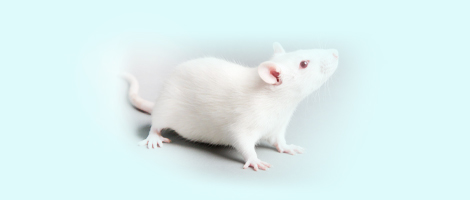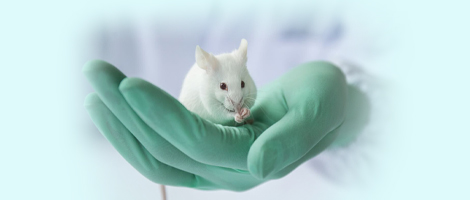| [1] |
ZHANG J, LIU Y H, LI S F, et al. A 90-day rodent feeding study with grain for genetically modified maize L4 conferring insect resistance and glyphosate tolerance[J]. Food Chem Toxicol, 2023, 176:113733. DOI: 10.1016/j.fct.2023.113733 .
|
| [2] |
ZHAO Y, CHEN M M, LI Y, et al. A 90-day safety study of meat from MSTN and FGF5 double-knockout sheep in wistar rats[J]. Life (Basel), 2022, 12(2):204. DOI: 10.3390/life12020204 .
|
| [3] |
SMITH B L, CARLSON A B, FALLERS M N, et al. Rodent and broiler feeding studies with maize containing genetically modified event DP-915635-4 show no adverse effects on health or performance[J]. Food Chem Toxicol, 2024, 189:114716. DOI: 10.1016/j.fct.2024.114716 .
|
| [4] |
ZHOU Q H, LI S F, ZHAO M, et al. A 90-day feeding study of genetically modified maize LP007-1 in wistar Han RCC rats[J]. Food Chem Toxicol, 2023, 180:114026. DOI: 10.1016/j.fct.2023. 114026 .
|
| [5] |
SUN N N, LIANG C L, ZHANG Q N, et al. Safety assessment of phytase transgenic maize 11TPY050 in Sprague-Dawley rats by 90-day feeding study[J]. Regul Toxicol Pharmacol, 2022, 128:105091. DOI: 10.1016/j.yrtph.2021.105091 .
|
| [6] |
李国华, 席小平, 贾继峰, 等. Wistar大鼠主要脏器系数与体重相关性的探讨[J]. 山西医药杂志, 2005, 34(8):661-662. DOI: 10.3969/j.issn.0253-9926.2005.08.021 .
|
|
LI G H, XI X P, JIA J F, et al. Correlation between main organ coefficients and body weight in Wistar rats[J]. Shanxi Med J, 2005, 34(8):661-662. DOI: 10.3969/j.issn.0253-9926.2005.08.021 .
|
| [7] |
CHEN C, SHI L L, MAO H M, et al. Safety assessment of transgenic maize CC-2 by 90-day feeding study in Sprague-Dawley rats[J]. Toxicol Res, 2024, 13(2): tfae025. DOI:10.1093/toxres/tfae025 .
|
| [8] |
胡雄飞, 杨秀鸿, 陈志莲. 不同周龄雌雄SD大鼠血液生理生化指标比较分析[J]. 实用预防医学, 2013, 20(10):1173-1176. DOI: 10.3969/j.issn.1006-3110.2013.10.007 .
|
|
HU X F, YANG X H, CHEN Z L. Comparison of the blood physiological and biochemical indicators among SD rats of different ages and genders[J]. Pract Prev Med, 2013, 20(10):1173-1176. DOI: 10.3969/j.issn.1006-3110.2013.10.007 .
|
| [9] |
郎天琦, 邹世颖, 侯曼, 等. SD大鼠90 d喂养试验生理生化指标正常参考值的研究[J]. 中国兽医杂志, 2016, 52(12):99-101.
|
|
LANG T Q, ZOU S Y, HOU M, et al. Study on the normal reference interval of hematological and serum biochemical indexes in 90 d feeding study on SD rats[J]. Chin J Vet Med, 2016, 52(12):99-101.
|
| [10] |
张薇, 唐彬, 付新录, 等. 不同月龄SPF级SD大鼠临床生理生化背景数据分析[J]. 热带医学杂志, 2018, 18(1):5-10. DOI: 10.3969/j.issn.1672-3619.2018.01.002 .
|
|
ZHANG W, TANG B, FU X L, et al. Analysis of the background data of hemocytology and biochemistry in the blood of SPF Sprague Dawley rats at different ages[J]. J Trop Med, 2018, 18(1):5-10. DOI: 10.3969/j.issn.1672-3619.2018.01.002 .
|
| [11] |
HOJO M, SAKAMOTO Y, MAENO A, et al. A histopathological analysis of spontaneous neoplastic and non-neoplastic lesions in aged male RccHan: WIST rats[J]. J Toxicol Pathol, 2020, 33(1):47-55. DOI: 10.1293/tox.2019-0064 .
|
| [12] |
BOCKENSTEDT M, KUMAR A, LAAST V, et al. Historical control background incidence of spontaneous nonneoplastic lesions of sprague dawley rats in 104-week carcinogenicity studies[J]. Toxicol Pathol, 2025, 53(2):173-186. DOI: 10.1177/01926233241289116 .
|
| [13] |
KUMAR A, BOCKENSTEDT M, LAAST V, et al. Historical control background incidence of spontaneous neoplastic lesions of sprague-dawley rats in 104-week toxicity studies[J]. Toxicol Pathol, 2023, 51(6):329-356. DOI: 10.1177/01926233231224466 .
|
| [14] |
蒋荣荣. 温湿度等环境因素对SD大鼠福利的影响研究[D]. 广州: 广州中医药大学,2014.
|
|
JIANG R R. Effects of environmental factors such as temperature and humidity on the welfare of SD rats[D]. Guangzhou: Guangzhou University of Chinese Medicine, 2014.
|
| [15] |
刘帅, 李军延, 陈巍, 等. 环境丰富对SD大鼠生长和血液学指标的影响[J]. 实验动物与比较医学, 2016, 36(1):41-47. DOI: 10.3969/j.issn.1674-5817.2015.06.008 .
|
|
LIU S, LI J Y, CHEN W, et al. Effect of environmental enrichment on growth and hematology in SD rats[J]. Lab Anim Comp Med, 2016, 36(1):41-47. DOI: 10.3969/j.issn.1674-5817.2015.06.008 .
|
| [16] |
KAWAGUCHI K, ASAI A, MIKAWA R, et al. Age-related changes in lung function in National Center for Geriatrics and Gerontology Aging Farm C57BL/6N mice[J]. Exp Anim, 2023, 72(2):173-182. DOI: 10.1538/expanim.22-0109 .
|
| [17] |
TRUJILLO-ROJAS L, FERNÁNDEZ-NOVELL J M, BLANCO-PRIETO O, et al. The onset of age-related benign prostatic hyperplasia is concomitant with increased serum and prostatic expression of VEGF in rats: Potential role of VEGF as a marker for early prostatic alterations[J]. Theriogenology, 2022, 183:69-78. DOI: 10.1016/j.theriogenology.2022.01.014 .
|
| [18] |
TRUJILLO-ROJAS L, FERNÁNDEZ-NOVELL J M, BLANCO-PRIETO O, et al. Rat age-related benign prostate hyperplasia is concomitant with an increase in the secretion of low ramified α-glycosydic polysaccharides[J]. Theriogenology, 2022, 189:150-157. DOI: 10.1016/j.theriogenology.2022.06.011 .
|
| [19] |
COOPER T K, MEYERHOLZ D K, BECK A P, et al. Research-relevant conditions and pathology of laboratory mice, rats, gerbils, guinea pigs, hamsters, naked mole rats, and rabbits[J]. ILAR J, 2021, 62(1-2):77-132. DOI: 10.1093/ilar/ilab022 .
|
| [20] |
ISOBE K, BAILY J, MUKARATIRWA S, et al. Historical control background incidence of spontaneous pituitary gland lesions of Han-Wistar and Sprague-Dawley rats and CD-1 mice used in 104-week carcinogenicity studies[J]. J Toxicol Pathol, 2017, 30(4):339-344. DOI: 10.1293/tox.2017-0030 .
|
| [21] |
MCINNES E F, SCUDAMORE C L. Review of approaches to the recording of background lesions in toxicologic pathology studies in rats[J]. Toxicol Lett, 2014, 229(1):134-143. DOI: 10.1016/j.toxlet.2014.06.005 .
|
| [22] |
MENSSEN M. The calculation of historical control limits in toxicology: Do's, don'ts and open issues from a statistical perspective[J]. Mutat Res Toxicol Environ Mutagen, 2023, 892:503695. DOI: 10.1016/j.mrgentox.2023.503695 .
|
| [23] |
OKAMURA T, SUZUKI S, OGAWA T, et al. Background data for general toxicology parameters in RccHan: wist rats at 8, 10, 19 and 32 weeks of age[J]. J Toxicol Pathol, 2011, 24(4):195-205. DOI: 10.1293/tox.24.195 .
|
| [24] |
LEDESMA-CORVI S, JORNET-PLAZA J, GARCÍA-FUSTER M J. Aromatase inhibition and ketamine in rats: sex-differences in antidepressant-like efficacy[J]. Biol Sex Differ, 2023, 14(1):73. DOI: 10.1186/s13293-023-00560-5 .
|
| [25] |
赵曼曼, 梁子禾, 刘晓萌, 等. SD大鼠胚胎-胎仔发育毒性试验背景数据的建立[J]. 中国药理学与毒理学杂志, 2024, 38(7):526-532. DOI: 10.3867/j.issn.1000-3002.2024.07.006 .
|
|
ZHAO M M, LIANG Z H, LIU X M, et al. Background data of SD rats in embryo-fetal development toxicity study[J]. Chin J Pharmacol Toxicol, 2024, 38(7):526-532. DOI: 10.3867/j.issn.1000-3002.2024.07.006 .
|







 ), 李双星(
), 李双星( ), 赵婷婷, 蒋晨晨, 赵晶, 杨艳伟, 林志, 王三龙, 文海若(
), 赵婷婷, 蒋晨晨, 赵晶, 杨艳伟, 林志, 王三龙, 文海若( )(
)( )
)
 ), LI Shuangxing(
), LI Shuangxing( ), ZHAO Tingting, JIANG Chenchen, ZHAO Jing, YANG Yanwei, LIN Zhi, WANG Sanlong, WEN Hairuo(
), ZHAO Tingting, JIANG Chenchen, ZHAO Jing, YANG Yanwei, LIN Zhi, WANG Sanlong, WEN Hairuo( )(
)( )
)